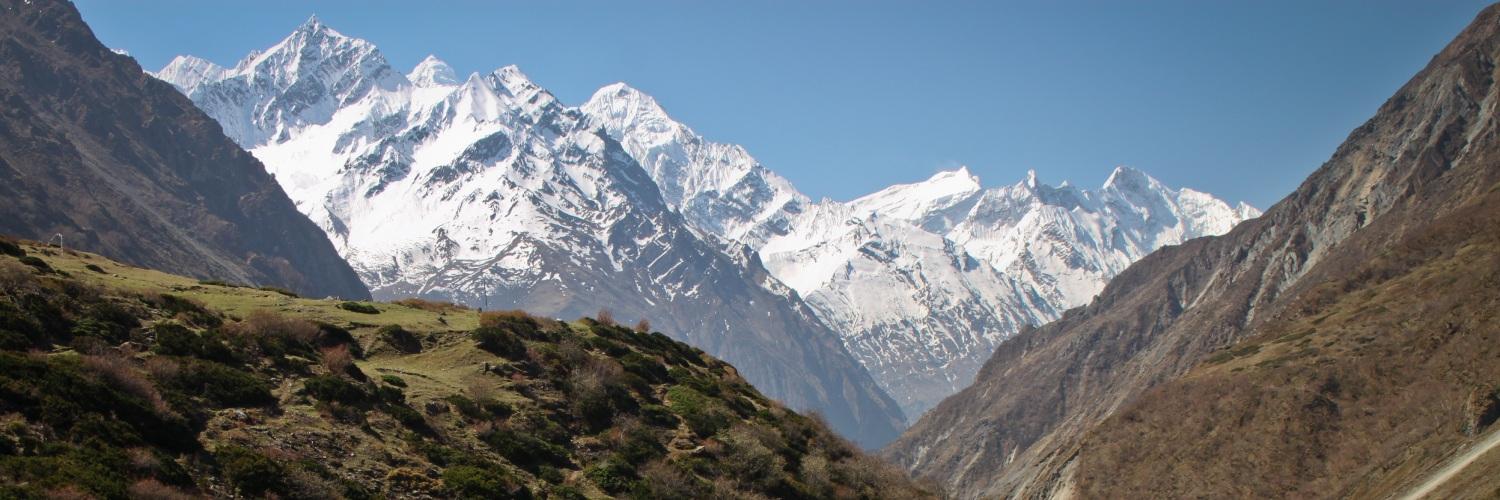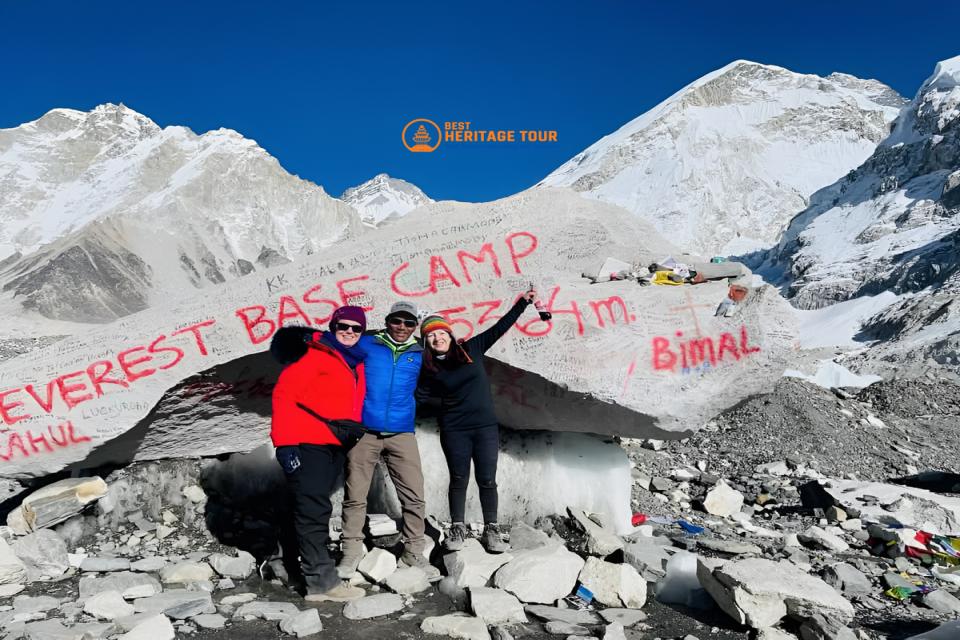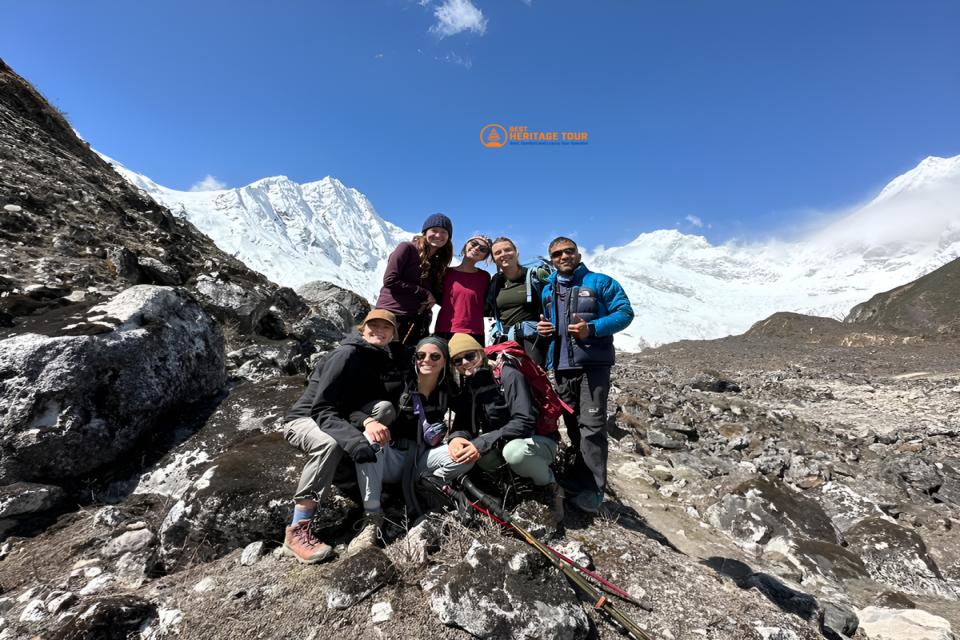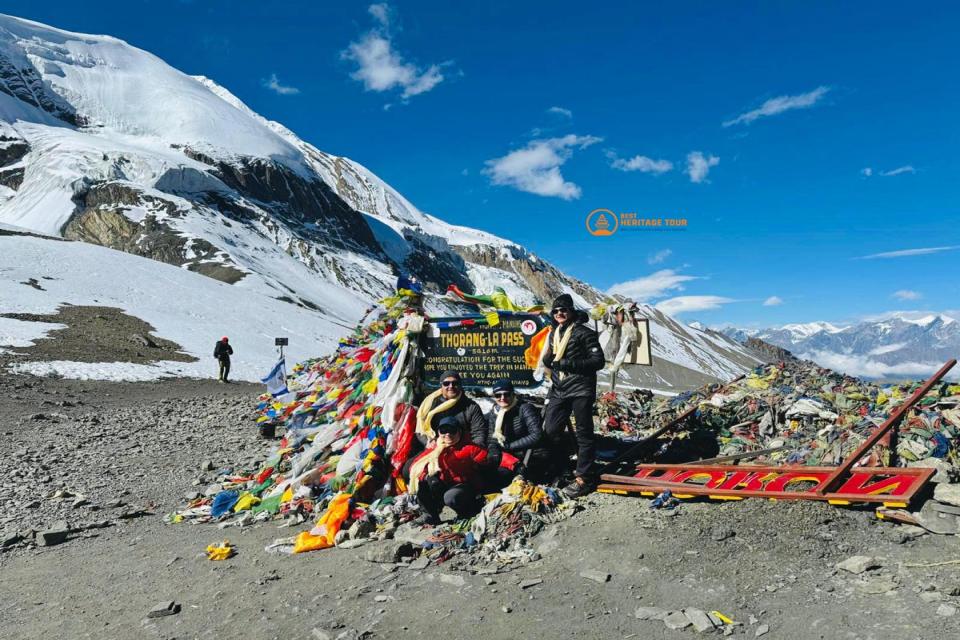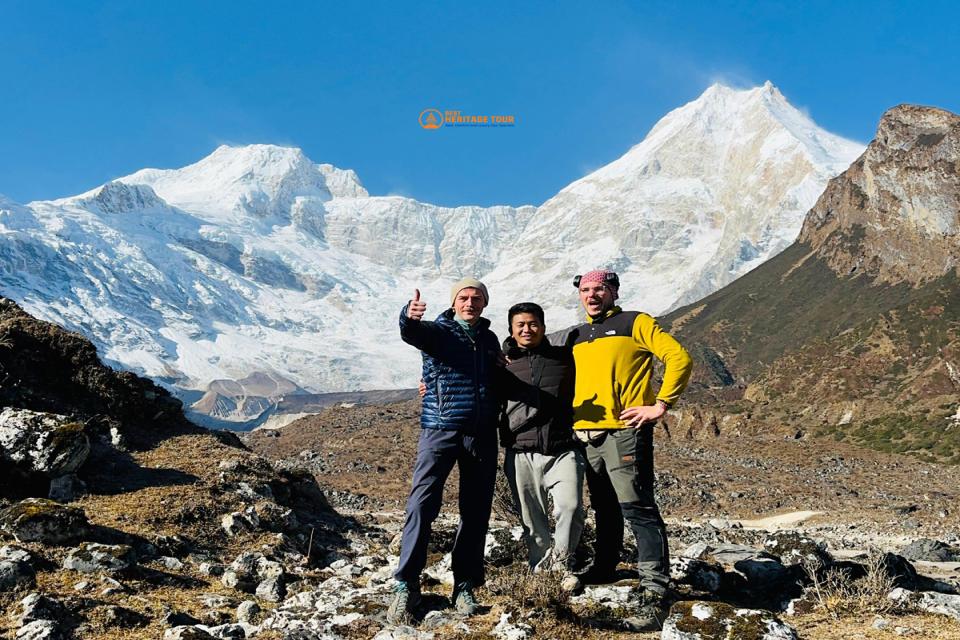For those craving raw Himalayan beauty far from the tourist-packed trails, the Manaslu and Tsum Valley Trek is the ultimate off-the-beaten-path adventure in Nepal. This challenging and culturally rich journey merges the high-altitude circuit around Mount Manaslu (8,163m) with the spiritual serenity of the Tsum Valley, a sacred Tibetan Buddhist enclave untouched by modernity.
Unlike the Everest region or Annapurna region, the Manaslu and Tsum Valley Trek offers a secluded wilderness experience, where you'll walk through ancient villages, encounter centuries-old monasteries, and witness jaw-dropping views of Himalayan giants. In this blog, you’ll find a complete guide to the trek’s itinerary, difficulty, cost, permits, best time, gear, and more, everything you need to plan your 2026/2027 trek with confidence.
Where Are Manaslu and Tsum Valley Located?
The Manaslu region lies in west-central Nepal, bordering Tibet, and forms part of the Gorkha district. The Tsum Valley branches off the Manaslu Circuit near the village of Lokpa, leading into a remote sanctuary known for its strong Tibetan Buddhist roots.
- Starting Point: Most treks begin from Soti Khola or Machha Khola, about 7–9 hours' drive from Kathmandu.
- Ending Point: After crossing Larkya La Pass (5,106m), the trail descends to Dharapani, connecting to the Annapurna Circuit trail.
This route covers two distinct regions in a single journey, combining high alpine terrain, lush valleys, and unique cultures.
Cultural and Natural Highlights
1. Tsum Valley: A Sacred Hidden Valley
The Tsum Valley, or “The Hidden Valley of Happiness,” is steeped in Buddhist mysticism. It remained restricted to outsiders until 2008. Its serene gompas, mani walls, and untouched lifestyle give a glimpse into ancient Himalayan life.
- Mu Gompa: A 3,700m high monastery near the Tibetan border
- Rachen Gompa: One of the region’s largest nunneries
- Chhekampar and Chumling: Traditional villages with stone houses and chortens
2. Manaslu Region: Pristine Himalayan Beauty
The Manaslu Circuit offers:
- Close-up views of Mount Manaslu, the 8th highest peak in the world
- Diverse ecozones: rice fields, pine forests, alpine meadows, and glaciers
- Remote villages like Samagaun, Samdo, and Lho, offering a blend of Tibetan and Gurung cultures
Manaslu and Tsum Valley Trek Itinerary (21–24 Days)
Here’s a sample 22-day itinerary for the Manaslu and Tsum Valley Trek:
|
Day |
Route |
Approx. Altitude |
|---|---|---|
|
1 |
Drive Kathmandu to Soti Khola |
710m |
|
2 |
Trek to Machha Khola |
900m |
|
3 |
Trek to Jagat |
1,340m |
|
4 |
Trek to Lokpa |
2,240m |
|
5 |
Trek to Chumling (enter Tsum Valley) |
2,386m |
|
6 |
Trek to Chhokangparo |
3,010m |
|
7 |
Trek to Nile / Mu Gompa |
3,700m |
|
8 |
Exploration Day at Mu Gompa |
3,700m |
|
9 |
Return to Chumling |
2,386m |
|
10 |
Trek to Deng (rejoin Manaslu Circuit) |
1,860m |
|
11 |
Trek to Namrung |
2,630m |
|
12 |
Trek to Lho |
3,180m |
|
13 |
Trek to Samagaun |
3,530m |
|
14 |
Acclimatization day at Samagaun (Manaslu Base Camp option) |
3,530m |
|
15 |
Trek to Samdo |
3,875m |
|
16 |
Trek to Dharamsala / Larkya Phedi |
4,460m |
|
17 |
Cross Larkya La Pass (5,106m) to Bimthang |
3,720m |
|
18 |
Trek to Tilije |
2,300m |
|
19 |
Trek to Dharapani – End of trek |
1,860m |
|
20 |
Drive to Besisahar |
760m |
|
21 |
Drive back to Kathmandu |
— |
Note: You can modify the itinerary based on pace, weather, and acclimatization needs.
Manaslu and Tsum Valley Trek Difficulty
This is considered a moderate to challenging trek. You’ll need good physical fitness and stamina, especially for long trekking days and high-altitude ascents.
Key Difficulty Factors:
- Elevation: Larkya La Pass (5,106m) and Mu Gompa (3,700m) can pose altitude risks.
- Trail Type: Steep ascents, narrow suspension bridges, rocky paths.
- Duration: 21–24 days of continuous trekking
- Daily Walking: 5–8 hours/day on average
With proper acclimatization and preparation, most trekkers with multi-day hiking experience can complete the trek.
Best Time for Manaslu and Tsum Valley Trek
Choosing the right time to trek Manaslu and Tsum Valley is crucial for enjoying breathtaking mountain vistas, comfortable weather, and safe trail conditions. These two regions offer distinct seasonal experiences, but some months clearly stand out as the best for trekking. Here’s a detailed guide to help you decide the ideal season for your Manaslu and Tsum Valley adventure.
- Autumn Trekking Season (September to November)
- Enjoy the best weather and crystal-clear visibility in the Manaslu and Tsum Valley region
- Experience crisp mountain views with dry and stable trekking trails ideal for a safe and enjoyable journey
- Perfect time for photographers and nature lovers seeking vibrant landscapes
- Spring Trekking Season (March to May)
- Witness the stunning rhododendron blooms in the lower elevations of Manaslu and Tsum Valley
- Expect mild and pleasant weather with occasional snow on high passes like Larkya La
- Ideal for trekkers looking for a mix of floral beauty and manageable weather conditions
- Seasons to Avoid on Manaslu and Tsum Valley Trek
- Monsoon Season (June to August): Heavy rains cause slippery trails, leeches, and increased risk of landslides, making trekking hazardous
- Winter Season (December to February): Harsh cold with snow-covered Larkya La pass and many teahouses in upper villages closed, limiting accommodation options
Permits Required for Manaslu and Tsum Valley Trek
Being in a restricted area, this trek requires special permits, only issued through a registered Nepali agency, and a licensed guide is mandatory.
Required Permits & Costs (as of 2025):
- Manaslu Restricted Area Permit (RAP): $100 for the first 7 days (Sept–Nov), then $15/day
- Tsum Valley Permit: $40 for 1 week (Sept–Nov)
- Manaslu Conservation Area Permit (MCAP): NPR 3,000 (~$25)
- Annapurna Conservation Area Permit (ACAP): NPR 3,000 (~$25)
Note: You also need a minimum of 2 trekkers in the group to get RAP and Tsum permits.
Accommodation and Food on the Trail
This is a teahouse trek, with simple lodging and home-cooked food in almost every village.
What to Expect:
- Rooms: Twin beds, shared toilets, blanket provided
- Meals: Dal Bhat, momo, Tibetan bread, soup, noodles, porridge
- Costs:
- Rooms: $3–7 per night
- Meals: $4–8 per meal
- WiFi & Charging: Limited in upper areas, available for a fee
- Hot Showers: Available in mid and lower elevations, $2–5
Trekking With or Without a Guide
A guide is mandatory due to the restricted area status. Solo trekking is not allowed.
Benefits of Hiring a Guide:
- Local knowledge of culture, language, and safety
- Help during altitude sickness or emergencies
- Support with permits and logistics
- Encourages sustainable tourism by creating jobs
Note: A porter is also highly recommended for carrying heavy gear.
Manaslu and Tsum Valley Trek Cost Breakdown (2026/2027)
Here’s a quick breakdown of Manaslu and Tsum Valley Trek costs for 2026/2027, including permits, guides, accommodation, food, and transport to help you budget your trek.
|
Expense |
Estimated Cost (USD) |
|---|---|
|
Permits (RAP, MCAP, ACAP, Tsum) |
$200–250 |
|
Guide (21 days) |
$25–30/day = ~$550 |
|
Porter (optional) |
$20/day = ~$400 |
|
Accommodation |
$5 × 20 nights = $100 |
|
Food |
$20/day × 21 days = $420 |
|
Transport (Kathmandu–Soti–Dharapani–Kathmandu) |
$50–80 |
|
Gear rental/purchase |
$50–100 |
|
Total Estimated Cost |
$1,300–1,800+ |
Note: Joining a Manaslu and Tsum Valley Trek package through a trekking company may range from $1,600 to $2,300, depending on services included.
Packing List for the Trek
A well-prepared packing list is key for a safe and comfortable Manaslu and Tsum Valley Trek. Here’s the essential gear list, personal items, and extras you should bring to tackle varying weather and altitude challenges.
Essential Gear:
- Waterproof hiking boots
- 4-season sleeping bag
- Down jacket, fleece, thermals
- Trekking poles, gaiters
- Backpack (50–60L) + daypack
Personal Items:
- Sunscreen, lip balm, wet wipes
- First aid kit, Diamox (for altitude)
- Water purification tablets
Extras:
- Power bank
- Headlamp with batteries
- Snacks, trail mix, and electrolytes
Altitude Sickness and Safety Tips
Trekking above 5,000 meters in Manaslu and Tsum Valley poses a significant risk of Acute Mountain Sickness (AMS). To stay safe, it’s crucial to follow proven prevention strategies:
- Ascend gradually with planned acclimatization days
- Stay well hydrated and avoid alcohol consumption
- Use Diamox medication if recommended by a healthcare professional
- Always listen to your body and never ignore symptoms
In case of emergency, helicopter evacuation is available from key points like Samagaun and Samdo, ensuring quick rescue when needed.
Manaslu and Tsum Valley vs. Other Treks
|
Trek |
Uniqueness |
|---|---|
|
Commercialized, crowded |
|
|
Road access in parts |
|
|
Remote, raw, less-trodden trails with unique Tibetan culture |
Note: This trek is ideal for those looking for authentic Nepal trekking experiences far from mainstream routes.
Photography, Wildlife, and Scenery
The Manaslu and Tsum Valley Trek showcases some of Nepal’s most breathtaking natural beauty and rich wildlife. Trekkers can capture stunning landscapes and experience vibrant cultural scenes throughout the journey:
- Glaciers, suspension bridges, and turquoise rivers create dramatic scenery
- Panoramic views of towering peaks like Manaslu, Himlung Himal, and Ganesh Himal
- Wildlife sightings including Himalayan tahr, elusive snow leopards (rare), and blue sheep
- Colorful cultural highlights such as prayer wheels, mani walls, and fluttering prayer flags
Responsible Trekking and Local Culture
Trekking in the sacred Manaslu and Tsum Valley region requires respecting local traditions and protecting the fragile environment. Follow these guidelines to ensure a responsible and rewarding experience:
- Dress modestly, especially when visiting monasteries and religious sites
- Always walk clockwise around chortens, mani walls, and prayer wheels
- Avoid using plastic; carry refillable water bottles to reduce waste
- Support local communities by using teahouses, hiring guides, and buying local products
Conclusion: Is the Manaslu and Tsum Valley Trek Worth It?
Absolutely! The Manaslu and Tsum Valley Trek offers the perfect blend of wilderness, spirituality, and adventure. It’s one of Nepal’s best-kept trekking secrets, ideal for trekkers who want authentic immersion into Himalayan life without the crowds of Everest or Annapurna.
With its stunning mountain views, ancient Tibetan culture, dramatic landscapes, and fewer trekkers, this trek is truly a life-changing journey for seasoned hikers and cultural explorers alike.
Ready to Trek the Manaslu and Tsum Valley in 2026/2027? Let Best Heritage Tour guide you through this extraordinary Himalayan journey with expert local guides, reliable permits, comfortable transport, and personalized trekking plans. You focus on the mountains, we handle the logistics!
Book now or get more info now:
- Phone/WhatsApp/Viber: +9779851149197 / +9779810043046
- Email: bestheritagetour@gmail.com / info@bestheritagetour.com
- Website: www.bestheritagetour.com
- Location: Thamel Marg, Kathmandu, Nepal
Reserve your spot today and experience the breathtaking Manaslu and Tsum Valley Trek with trusted local experts!
Author: Best Heritage Tour
Date: 22nd June, 2025

